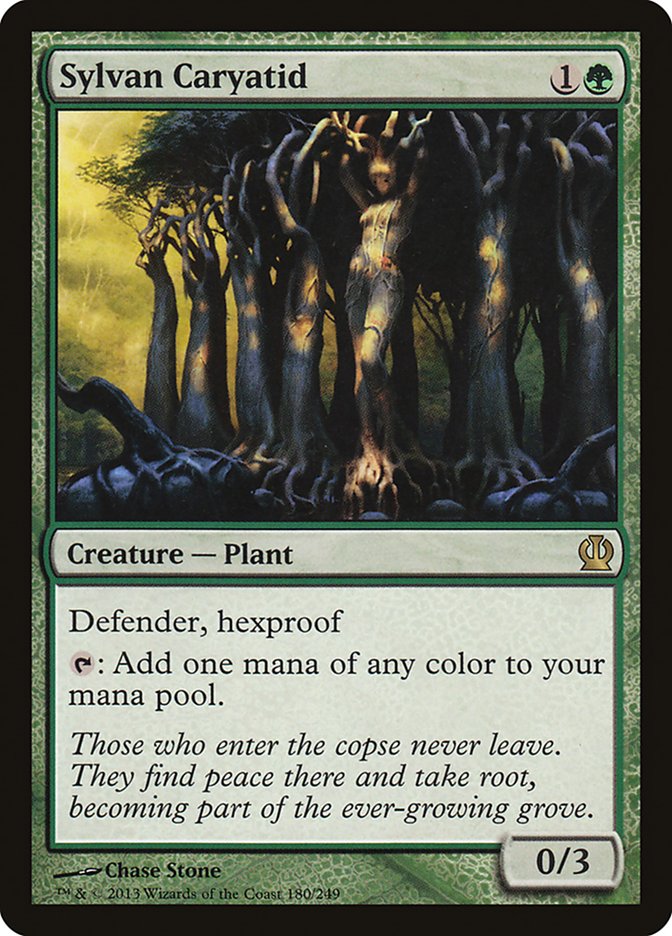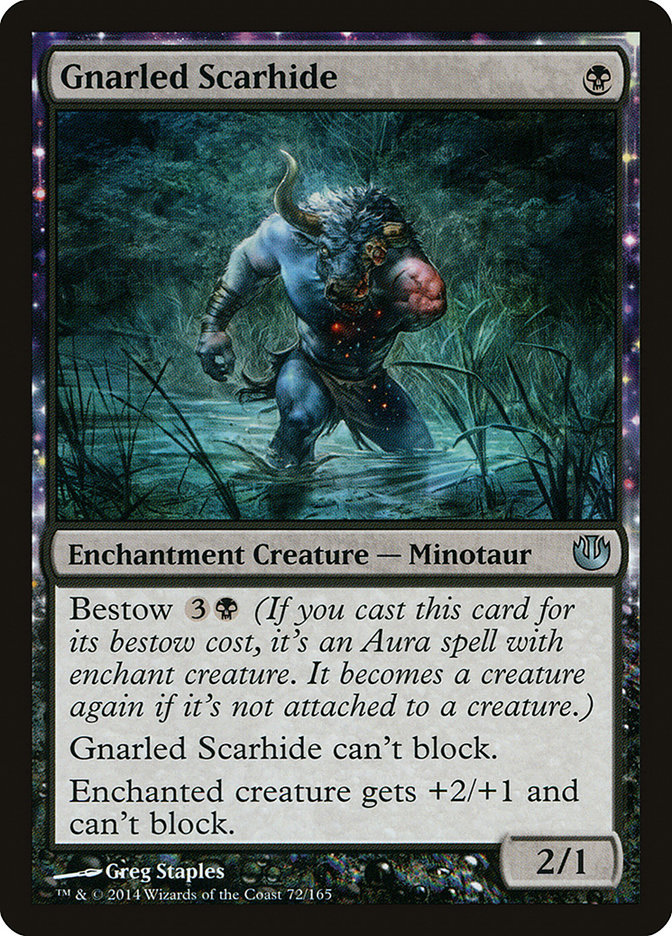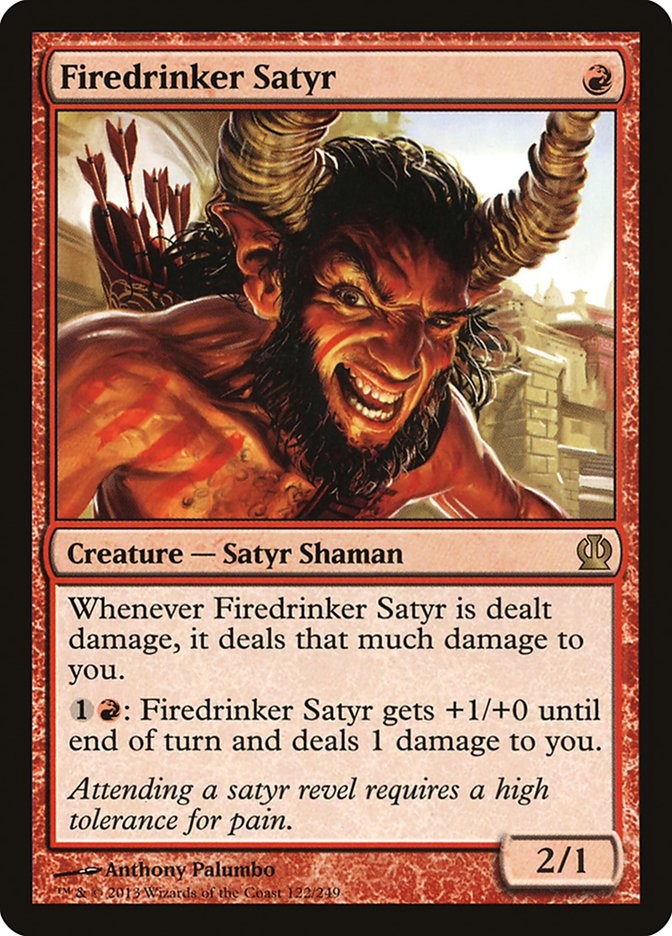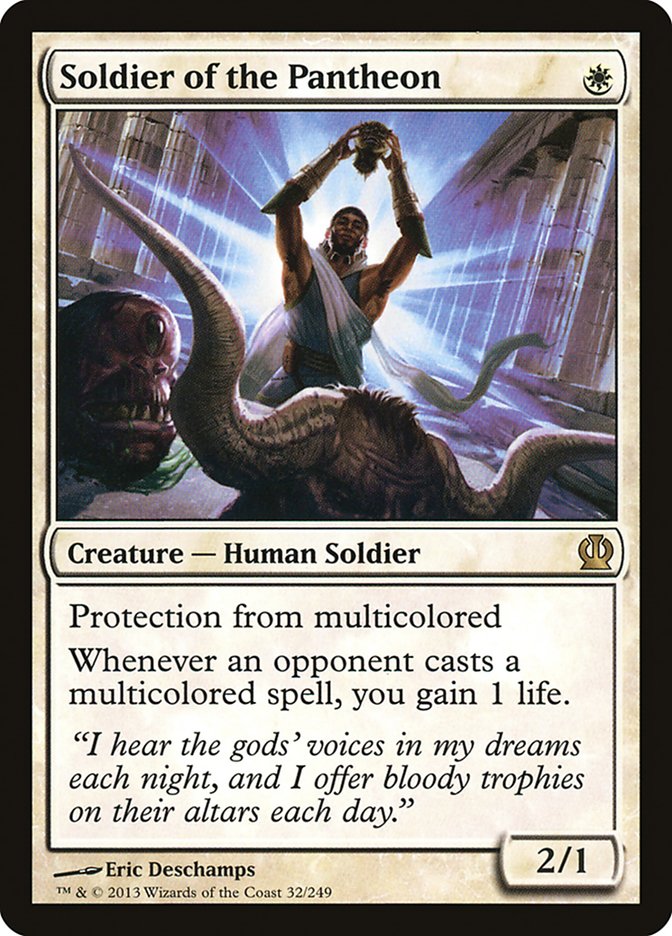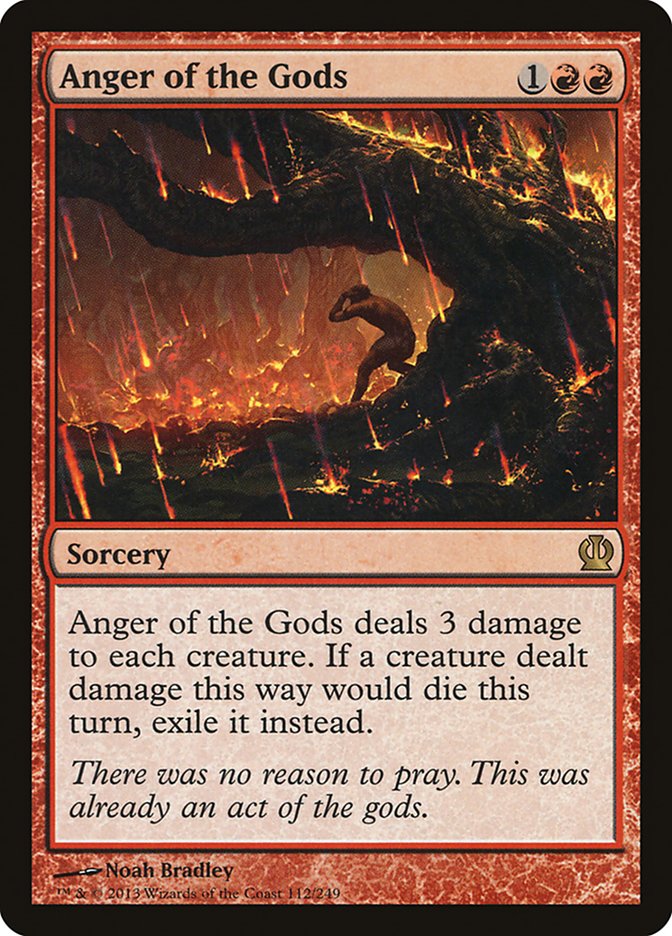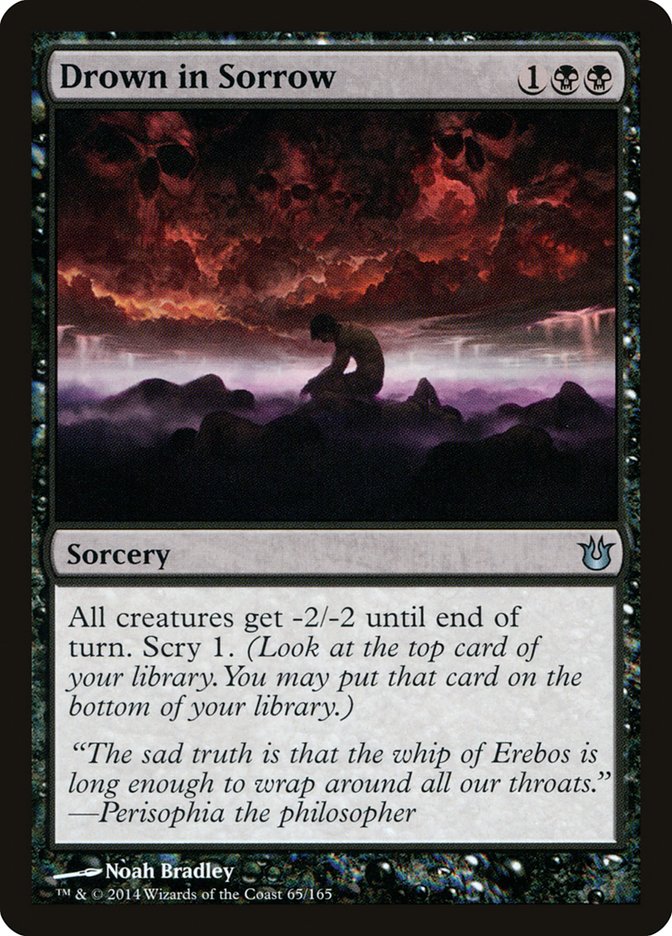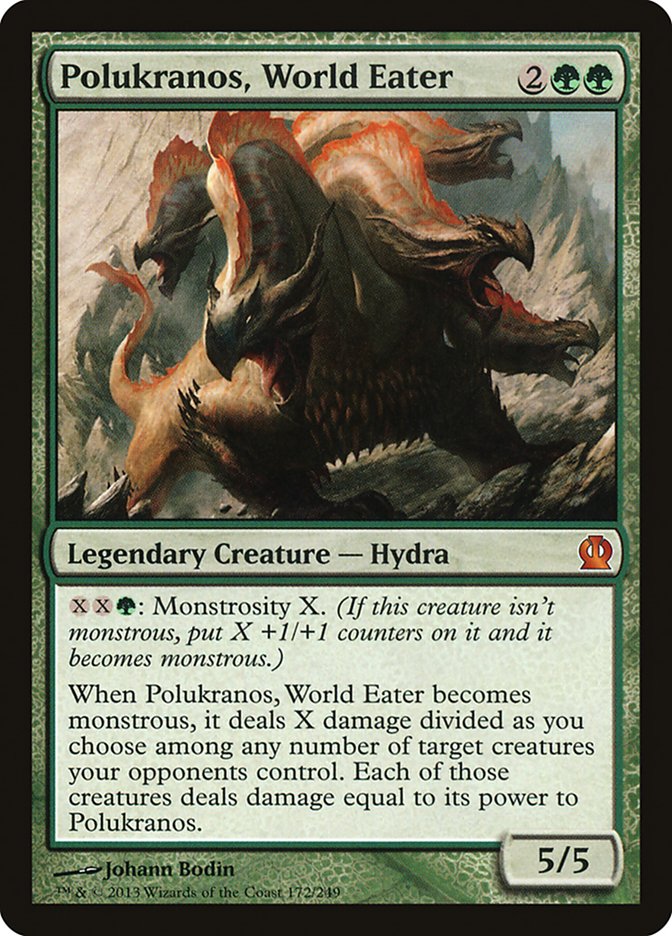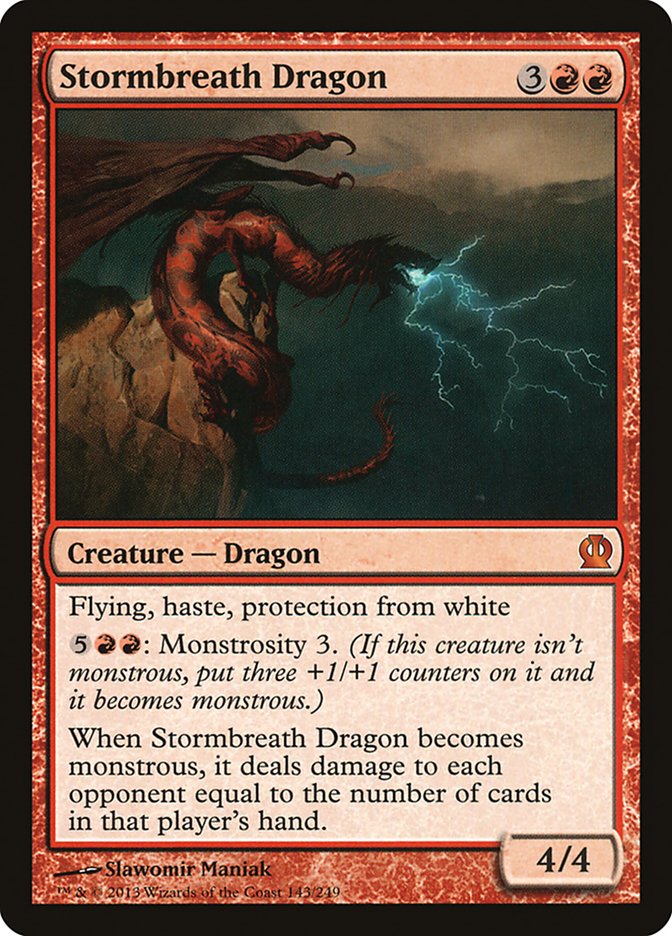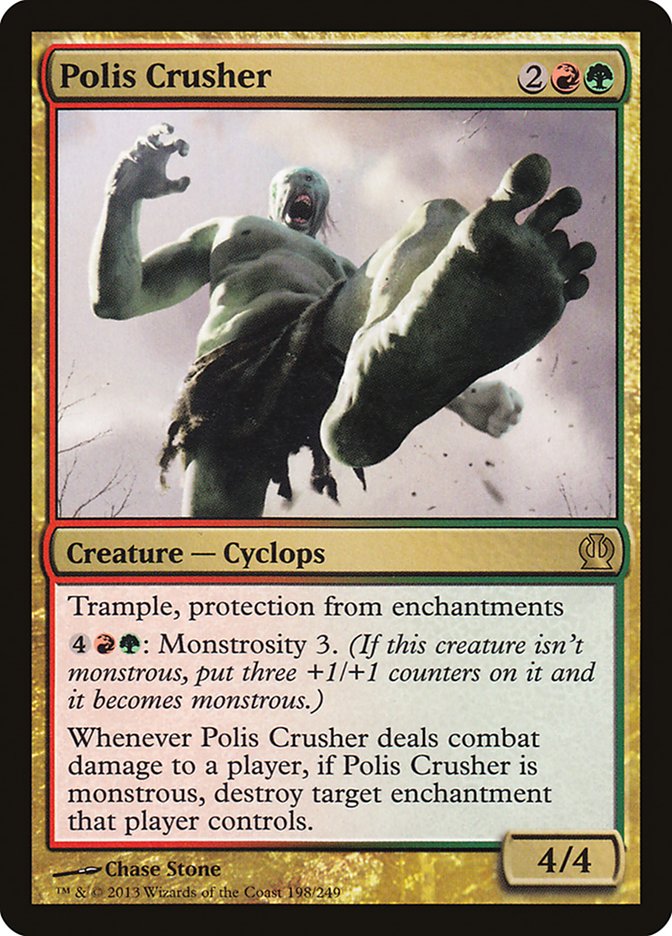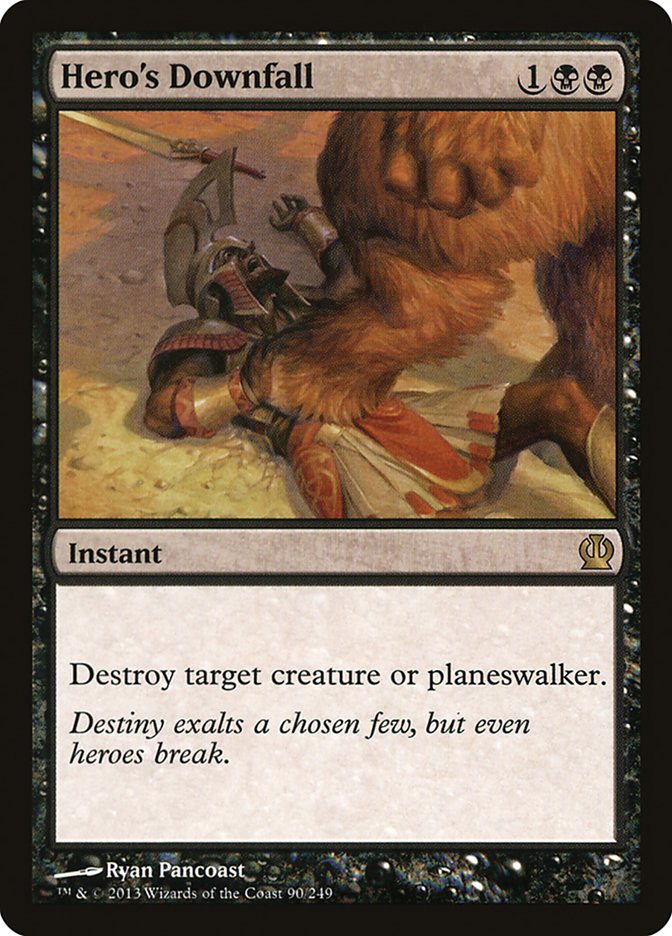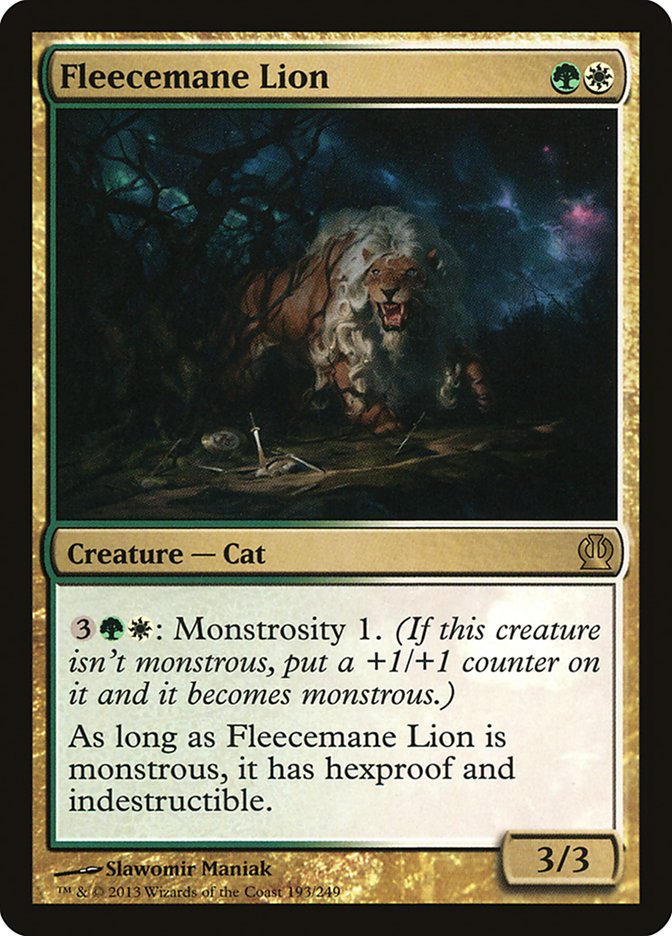Last year,
I wrote an article documenting expectations set from Block moving into the new year.
Today, I’m going to try to do that again.
Last year, I feel like I underrepresented Magic 2014 cards when talking about Block. To be fair, I didn’t know about devotion and couldn’t reasonably
expect maindeck Tidebinder Mages, but Lifebane Zombie should not have been missed.
This year I’m going to be very specific about how Magic 2015 affects all of the holes in the format.
Setting the Stage
This Block format was far more fluid and less archetype defined, so I’m going to cover cards instead of decks.
You would think this is where we should start, but there’s a story to tell that leads to this point.
If you weren’t configured to fight the aggressive decks in Theros Block, they would brutally dismantle you. With the power level push on creatures, the
rates on the smallest creatures have probably jumped the most and with them the aggressive decks’ typical clock rapidly increased.
One-drops aren’t the only issues here. The aggressive decks had good options up the curve that made stabilizing trickier. Black had the most with multiple
bestow creatures, Master of the Feast, and Mogis’s Marauders, but Red also had bestow guys and the extremely scary Prophetic Flamespeaker, while White’s
heroic creatures could grow to rival the larger threats.
Decks in the format needed a way to stymie the extremely powerful starts of Black, Red, and White aggro decks early on or they would easily be overwhelmed
before more expensive options came online.
The tools certainly exist to slam the door shut on triple one-drop draws. There were a few decks my team had in testing for Pro Tour Journey into Nyx that
we straight up abandoned because they had no way to recover from one of these three-drop sweepers.
These cards can’t singlehandedly solve the entire problem as again there are larger threats to contend with, but they do a decent job at making sure the
low end threats don’t kill you.
They just weren’t playable as maindeck answers.
The real reason the small sweepers didn’t succeed was that the midrange threats were also a reasonable answer to aggressive curves. Anger of the Gods is
not going to do anything against a deck that is slamming 5/5s on turn 3, and the curve of mana accelerant into Polukranos is probably good enough to stop
more aggro rushes.
So that’s how we get back to here.
This is the way to handle aggressive draws that is the least blank in midrange mirrors. Courser of Kruphix and Sylvan Caryatid at least do something in
fights over four-drop threats by providing mana and card advantage while the best the cheap sweepers can do is hope to set up a one-for-two.
And that’s also how we got here. Other colors may have had better options against pure aggressive strategies, but these cards are useful against any
attacking creatures while being able to handle the midrange threats.
This card also had a chance to shine. It does line up well against Hero’s Downfall but a big reason was also because the mediators of the format (Courser
and Caryatid) were cards that provided extra mana, making the jump to six less of a big deal.
And now finally we get to here.
Creatures (18)
- 2 Polukranos, World Eater
- 4 Sylvan Caryatid
- 4 Fleecemane Lion
- 4 Brimaz, King of Oreskos
- 4 Courser of Kruphix
Planeswalkers (4)
Lands (25)
Spells (13)

Fleecemane Lion was the creature that matched up well against Sylvan Caryatid, Courser of Kruphix, and the assorted aggro 2/1s on size. It matched up
against the various removal well on cost, and it eventually became hexproof. It even matched up reasonably well against Elspeth, Sun’s Champion as a 3/3 or
a 4/4 indestructible, though it gets blocked by the infinite stream of Soldier tokens.
So, that’s the story of Block Constructed?
What does that mean for the future?
Archetypes
Midrange:
What Are You Looking For:
Threats that Change the Rules of Engagement.
As mentioned above, it’s not a shock to me that the full eight Fleecemane Lion showed up in the finals of Pro Tour Journey into Nyx. It paired well against
the removal and the threats.
If another threat were introduced to the format that was similarly positioned against the answers at hand, it would have similar success and possibly shape
the format if it was prominent enough. Think about how Stormbreath Dragon makes a certain set of White interaction considerably worse. A card on the same
scale with Protection from Black, protection from Instants and Sorceries, Indestructible, Shroud, or even just some kind of recursion would push back
against the Hero’s Downfall plus Thoughtseize interaction package. To be fair, it might need a bit of evasion or growing advantage generation due to how
many 0/3s and 2/4s it has to smash through on the ground (apologies to the spoiled Zurgo Helmsmasher from Speed vs. Cunning), but it might just be okay to
keep hitting them until they slowly run out of things to not die with.
The other option is some smaller threat that makes that removal significantly worse. Think of how Hero’s Downfall was not the best removal spell this year
because it didn’t kill Pack Rat in time. I don’t think we will see anything quite that powerful, but something along those lines would have a similar
effect.
Magic 2015 has a lot of additions to the “trades favorably with Downfall” category, but all of them are slight value two-for-ones. Genesis Hydra looks
great on paper but is likely too expensive. Nissa, Worldwaker is obviously insane but comes up a little short in the size fight against the base creature
threats, which is a nice twist reminiscent of how Blood Baron of Vizkopa couldn’t stand up to Polukranos this year. The Souls are all clearly designed to
line up well here, and Scuttling Doom Engine also fills a similar role. Even Garruk, Apex Predator does a reasonable job here.
But as I said, they are all two-for-ones. They all just trade marginally well there, and Downfalling those threats is probably one of the best things you
can do in each case. None of them make Downfall actively bad, and if you are looking for a real shift in the midrange metagame that is what has to happen.
Aggro:
What You are Looking For:
Better Curve and/or Better Lands.
The aggressive decks in Block were quite powerful, but they came up lacking. Besides having to face obnoxious cards like Courser of Kruphix every match,
another big reason was they weren’t able to play a good number of lands.
Part of this was simple card density. In three sets there just weren’t enough cards to build an aggro deck with a low enough curve of playable cards to
play 21-22 lands. The Mono-Black deck’s biggest weakness was that it’s curve glutted at three, and the Red deck’s biggest issue was that while a couple of
the cards it played were insane (Prophetic Flamespeaker), it also had to play some clunkers (Satyr Hoplite).
M15 brought a few things for White (Spirit Bonds, Ajani Steadfast), basically an entire Red deck that people are playing in Standard, and almost nothing
for Black.
But it brought the painlands.
Mana Confluence and a Temple was not quite enough to splash a color, but eight untapped sources might make the difference. Red can now play Chained to the
Rocks reasonably, and full-on two color aggro might come to fruition. This last one also depends in large part on how the multicolored cards in Khans of
Tarkir split. To use Shards of Alara comparisons, if there are a ton of Sprouting Thrinaxes and Rhox War Monks, you aren’t going to see aggro succeed, but
if there are a reasonable number of Goblin Deathraiders or Esper Stormblades, it might work out for the right pair. Also note that enemy colors fit along
wedges to maximize the way five painlands can fix for each wedge (two per as opposed to one per with friendly colors), so I wouldn’t be shocked if a few
enemy color aggro plants make their way into the set to fit the mana. To be fair, Temples, Confluence, and Ravnica shocks weren’t enough to make it worth
playing two-color aggro for most of the year, but I expect next year’s format will be a little less punishing than this one’s.
The mana equation could also swing favorably for aggro in the other direction if value lands are printed that allow aggro to compete while flooding out. As
is, the incentive for flooding is bestow, but your bestowed early drop is probably still less powerful than a natural four-drop in this format. If you
could supplement that with a man land, Innistrad-style ability land (Moorland Haunt), or even just a Horizon Canopy spinoff you could keep up the extra
pressure required to win the games you draw a land or two extra. I don’t expect anything on the Treetop Village or Creeping Tar Pit level, and I don’t even
expect a Gavony Township, but a little bonus would help turn losing fights into tight races and add consistency to the aggressive deck’s midrangier draws.
Control:
What You Are Looking For:
Real Card Advantage or a Cruel Ultimatum.
There was a nearly reasonable Esper or U/B Control deck in Block. It played all the good removal and finished with Prognostic Sphinx.
The BUG deck that top 8ed the Pro Tour in the hands of Josh Utter-Leyton and Reid Duke and gave Fabrizio Anteri his second title at Grand Prix Manchester
was just better.
The non-Green control deck simply didn’t have a way to gain card advantage. At best, you could cast Divination and Font of Fortunes or strive a Silence the
Believers…. if you drew seven lands. There was no Sphinx’s Revelation or incremental source of card advantage to pull you ahead. You had to rely on
Temples and Prognostic Sphinx triggers to keep your draws at a perfect balance and wait for your opponent to brick off for a few turns.
The Green deck had Kiora, the Crashing Wave’s -1 ability and Courser of Kruphix to slowly end up ahead on cards. The non-control Green decks had Eidolon of
Blossoms on top of these cards. You weren’t winning an attrition war against anything.
Of course, there are other ways to take advantage of playing the control role. Even if you aren’t getting ahead on cards, you can just play to some point
of inevitable victory. The example I would reference is Cruel Ultimatum Control playing against the Jund-esque Bloodbraid Elf decks of that era or Sphinx’s
Revelation versus the various midrange decks the last couple years. You have a single card that if the game reaches the point where you can cast it, they
lose.
That card simply doesn’t exist in Theros block. The best we found for that Pro Tour was Archetype of Endurance, and even the Arche-pig dies to Elspeth.
Elspeth is another big hitter, but in a world of Hero’s Downfalls it often makes a few 1/1s that can’t attack profitably and dies.
Magic 2015 certainly has better sources of card advantage. If nothing else, Jace’s Ingenuity gives you a larger source of card advantage that lets you
further get ahead on attrition with less mana/tempo invested than the existing card draw.
You also get to play the Souls as win conditions. I’m not sure if the “Flashback” on the larger threats is better than the hexproof on Prognostic Sphinx,
especially if Silence the Believers sees significant play, but they certainly help you in the value game.
In terms of Ultimatums, the pickings are slim. Garruk, Apex Predator looks like it is trying to play that game, but look at Elspeth, Sun’s Champion and you
can see the same thing (three-power output on a +1); it doesn’t really change the dynamics.
The card I’m most excited about in that role is actually Hornet Queen. Seven mana and triple Green is a big commitment, but if you are already playing
Sylvan Caryatid and Courser of Kruphix, that is well within range. It flies over Elspeth, takes down Stormbreath Dragon, spreads over Kiora’s +1, and is
near impossible to kill with spot removal. Even against aggro, it one shot stabilizes the board if you can get to seven mana. The drawback is that Doomwake
Giant exists, but that is a metagame step I’m willing to take when we get there.
Spicy Cards
As we saw this year, the devotion mechanic bringing a new linear focus to decks was a big game changer. The seeds of potential archetypes exist now, and
while Theros mostly focused itself into a few key mechanics, there are a few hidden gems there and a ton in Magic 2015.
Heliod’s Pilgrim is a Trinket Mage. Joe Bernal posted an interesting list this year that found Awaken the Ancients and Chained to the Rocks, the latter
being the Shriekmaw the format was missing. Awaken isn’t around next year, but a lot of interesting options might be.
I doubt Return to the Ranks is going to be as good as it would have been with Voice of Resurgence and Cartel Aristocrat, but it might find a friend or two.
I really want Necromancer’s Stockpile to be good. The best Zombies are all leaving the format, but we still have Gray Merchant of Asphodel and that’s a
start. There’s also the Tymaret, the Murder King loop that turns the Stockpile into a black Treasure Trove.
All of the artifact theme plans imply something might be coming down the line. Ensoul Artifact, Shrapnel Blast, and Hoarding Dragon are some interesting
incentives that need enablers.
Dredge is still mostly legal (read: Nighthowler and Satyr Wayfinder), and it regains Elvish Mystic to keep things up to speed.
I also really want Strength from the Fallen to work, but I have a sad feeling it will never find the perfect balance. We had a Chronic Flooding list in
testing for Pro Tour Magic 2015, but it wasn’t quite there on being able to keep the engine running.
Obelisk of Urd made No Limit Soliders possible this year, and while that
deck is losing twelve one- drops, there’s another bunch of options where that came from.
Chasm Skulker loses its best buddies Whispering Madness and Notion Thief but might be a reasonable threat if you can boost it above 4/4 quickly as it can
take a Downfall and (mostly) tell the tale.
Thassa, God of the Sea did not get a lot of Devotion love in this last set, and neither did the other Gods. I would not expect them to in a wedge set, but
there’s always a chance.
On the Blue Devotion note, I would expect Master of Waves to be more of a Huntmaster of the Fells next year. It’s fine as a couple 2/1’s that fight a team
and doesn’t need to be an army in a can to see play.
Dictate of Kruphix came close to making Turbo-Fog happen this year and came close to making Whelming Wave happen in Block. Howling Mine is a powerful
effect to build around and is even more of a powerful effect with flash.
Do take this all with a grain of salt. As a multicolored set, we can expect Khans of Tarkir to bring a lot of power with it, and that tri-colored power
level will clash with the mono-colored power of devotion. It’s hard to say exactly what will win, but if this year is any indication, the old cards having
previous success is not close to a guarantee of them dominating the next year.

